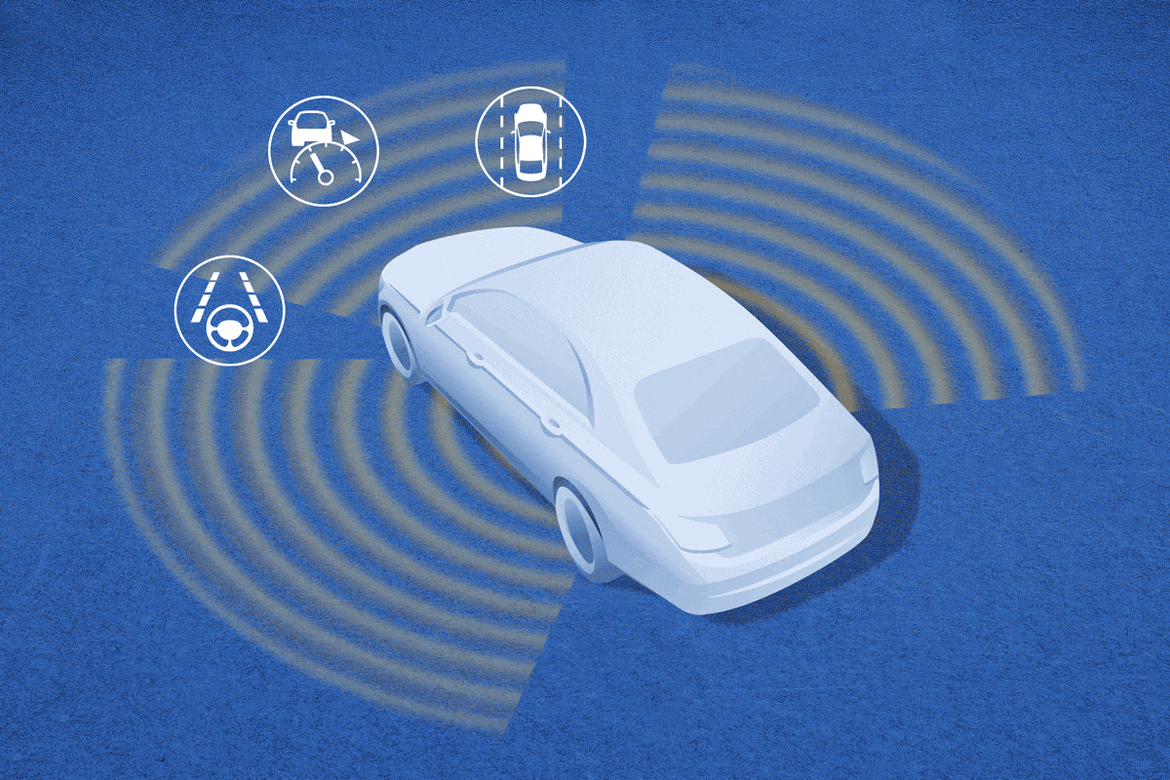
Advanced safety-tech features used to be expensive, fancy additions to a vehicle, but as cars move further into the 21st century, many features that were once a luxury are now becoming standard. Some of the safety features that can help you on the road sound like something out of a futuristic sci-fi show.
Relying blindly on these safety features can be dangerous, especially if you overestimate their abilities or don't know how to use them correctly. While some advanced driver assistance systems, or ADAS, sound self-explanatory, they may not be designed to do exactly what you think.
How well do you think you know your car's safety features — and how well do you actually know them? See if you can correctly answer the questions below without peeking at the answer.
The purpose of blind spot monitoring is to ...
A) Detect when another vehicle is in your vehicle's blind spot
B) Detect when your vehicle is located in another vehicle's blind spot and sound your vehicle's horn if the other vehicle begins to move into your lane
C) Detect when your vehicle is located in another vehicle's blind spot
The answer: A. Ninety-five percent of drivers with this technology answered this correctly.
Forward collision warning systems are designed to ...
A) Detect a crash and automatically apply the brakes if a crash is imminent
B) Detect and warn the driver of an imminent collision
C) Detect when a crash is imminent from the front, sides and/or the rear of the vehicle
The answer: B. Sixty-two percent of drivers with this technology answered this correctly.
Automatic emergency braking systems ...
A) Can be relied on to prevent all rear-end collisions
B) Function best during times of high glare (i.e., sunrise and sunset)
C) Rely on sensors and/or cameras that may be blocked by dirt, ice or snow
The answer: C. Sixty-seven percent of drivers with this technology answered this correctly.
Lane departure warnings can ...
A) Provide an alert if your vehicle is departing its lane
B) Provide an alert if another vehicle is entering your lane
C) Gently steer your vehicle back into the lane if it begins to depart from the lane
The answer: A. Eighty-one percent of drivers with this technology answered this correctly.
Lane keep assist systems ...
A) Are like "cruise control" for steering so the driver does not need to use the steering wheel
B) Can work well in thick fog or heavy precipitation because they rely on radar
C) Do not respond if the turn signal is activated and the vehicle is drifting in that direction
The answer: C. Seventy-eight percent of drivers with this technology answered this correctly.
So ... how did you do?
If you didn't do well, you're not alone (as you might be able to see from how many people answered correctly). According to a new AAA study these questions came from, many drivers don't know the proper use or limitations of their vehicle's safety features.
Among other things, researchers found that nearly 80 percent of drivers with blind spot monitoring systems were unaware of limitations or incorrectly believed the system could accurately detect vehicles passing at very high speeds or bicycles and pedestrians. Nearly 40 percent of drivers didn't know the limitations of their forward collision warning and automatic emergency braking, either.
According to AAA, a lack of confusion about the proper function of an ADAS can lead to misuse and overreliance on the systems, which could result in a deadly crash. About 25 percent of vehicle owners using forward collision warning or lane departure warning systems report feeling comfortable engaging in other tasks while driving, even though that is not what these features are designed to do.
"When properly utilized, ADAS technologies have the potential to prevent 40 percent of all vehicle crashes and nearly 30 percent of traffic deaths," said David Yang, executive director of the AAA Foundation for Traffic Safety. "However, driver understanding and proper use is crucial in reaping the full safety benefits of these systems. Findings from this new research show that there is still a lot of work to be done in educating drivers about proper use of ADAS technologies and their limitations."
If this quiz has you thinking you should learn more about the ADAS technologies in your vehicle, turn to your owner's manual and to your car's manufacturer to figure out how to use them to the best of their abilities. ADAS technology has the potential to prevent a reported 9,496 deaths, 1.1 million injuries and 2.7 million crashes every year — but only if used properly.
's Editorial department is your source for automotive news and reviews. In line with 's long-standing ethics policy, editors and reviewers don't accept gifts or free trips from automakers. The Editorial department is independent of 's advertising, sales and sponsored content departments.


